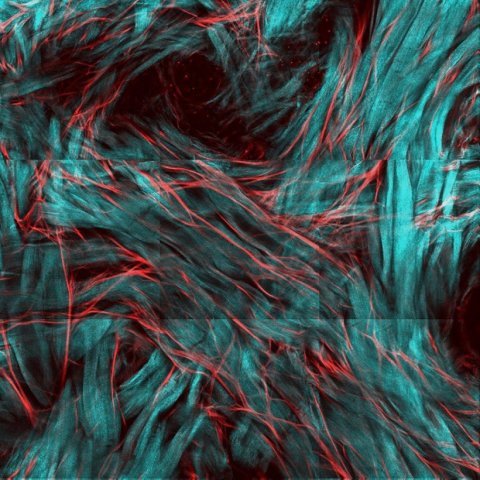Video • Collagen unter the microscope
Seeing the pattern beneath the skin
As the largest organ of the human body, our skin is astounding. It protects us from infection, endures radiation, senses temperature, and is flexible enough to withstand our everyday activities. What holds this all together is the protein we all know and love: collagen.
In a paper published in Scientific Reports a team from Japan found for the first time that collagen in the skin is organized in a mesh-like structure, and that elastic fibers – the connective tissue found in skin – follows the same orientation. Since the 1960s, researchers have debated whether skin collagen was arranged randomly or had some kind of ordered orientation – information vital to understand its pliability for further clinical use. Due to the skin's pliable nature, researchers inferred that collagen and elastic fibers have some sort of geometric orientation like a rhomboidal net. However, studies failed to demonstrate any organization, which is attributed to the tightly packed nature and complex intertwining of collagen fibers.

Image: Kyoto University/Susumu Saito
"Because the fibers are so tightly packed, it was impossible to determine if their orientation is ordered or random," explains first author Susumu Saito of Kyoto University's School of Medicine. "So, we developed a way to essentially stretch a skin sample on a 2D plane that increases the inter-fiber space of the collagen but retains its core structure."
Using multiphoton microscopy, a technique used to observe living tissue in fine detail, the team found clear evidence that the collagen fibers were arranged in a mesh-like lattice, and not in the clear geometric orientation as previously hypothesized. They even found that the connective tissue know as elastic fibers were also distributed in the same way, something that was previously unobserved. "There was little information on how elastic fibers and collagen fibers in the skin related to each other. However, it was believed that the recoiling force of elastic fibers leads to the contraction of collagen," explains Saito.
Understanding the geometric organization of fibers in the skin can lead to better insight into the mechanisms underlying human skin pliability that can be applied for future medical use in skin grafts and transplantation. The team intends to further their research by uncovering the relationship between the collagen network and elastic tissues, and hopes their new technique will be utilized to study the fibrous microarchitecture in other connective tissue networks.
Source: Kyoto University
02.08.2019










